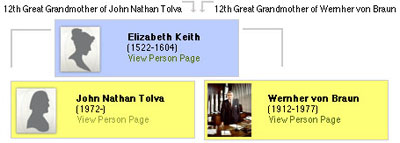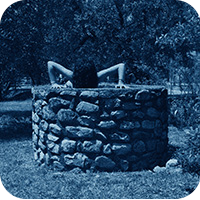Better than “Information Superhighway”, I suppose
Spotted at the St. Petersburg airport. I’d like to say this ad is from 1999, when the term cyberspace at least had a degree of currency. Alas, no. It is new. Someone somewhere thought this was a good idea. Cyberspace. Sheesh! The term was awful even when it didn’t sound dated.

Sidenote: St. P’s airport is called Pulkovo II. Like a sequel. Revenge of the Airport.
How to know you’re in trouble for the web demo you’re about to give
Your co-presenter says the following things during set-up. Let’s call this person a she. Let’s call her Pauline. Let’s also call her my boss.
- In establishing a wireless network connection she said “Oh, we’re not connected.” The status said connected 100% and it clearly was. I looked at her funny. She said “See, the little lines aren’t making it all the way across.”
That’s eye-candy, Pauline. An animation. To make users feel warm inside. It means nothing. But that brick wall there, that really does exist. Best way to keep out viruses is to run your connection straight through solid brick. Kills ’em right off, I tell you.
- I ask her to find an empty spot on her desktop and drop a file there. She responds “There are no empty spaces.” Wha? Looking over I see she’s right. Not a single square of available space. I think everything she’s ever downloaded is crammed onto this single screen. Half of which are the executable installs for the very program icons that follow them. And, since Windows often uses the same icon for installs and for the program itself she reinstalls apps about as often as she means to run them.
- “Wow! How did you just switch programs that fast?” Um, I clicked on the other window. (No Alt-Tab sorcery here folks!) “I didn’t know you could do that,“ she says. ”If I need to go from one program to another I just close the window and open a new one.“ Hello, MS-DOS!
I’m doomed.
This is what happens back at home when I travel
The inmates run the asylum (and my Last.fm account, apparently).
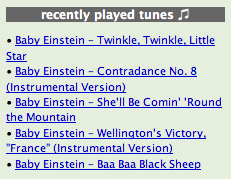
Enough already
I’m sure there are some readers sick of the baseball and genealogy posts. Suffice to say that my blissful month of no travel (OK, not much travel — I’m in NYC right now) is coming to an end. This means new posts on things like Russia when it don’t go dark, travels with Oprah Winfrey, certainly a trip or two to China, and a few other new destinations.
My loss, your gain.
Roof, raised
Continuing down the checklist of things I’d like to see/do at Wrigley Field (lounge in the outfield, check; witness drubbing of Sox in crosstown match, check), Tuesday night was my first game viewed from a building rooftop outside the park. Those of you who don’t follow baseball may not know that Wrigley, being a 93-year-old urban ballpark, is tightly surrounded by a residential neighborhood. Three-flats line left and right field and, except two that display advertising, each of these buildings have for years hosted private groups on their rooftops. It is a unique vantage, this outsiders’ view inside.

I remember watching a game with my grandfather in the late 70’s when Bill Buckner hit a home run out of the park and shattered a window in one of the buildings. I thought, wow, someone is going to come home from work and find a great surprise. Of course, these days very few come “home” to these buildings. The homes have been almost completely taken over by the “clubs” which perch atop them. Many are owned by local bars, nearly all are managed by the same company. (After a nasty battle involving the erection of screens to partially obscure the view from the roofs most of the clubs agreed to give the Cubs 17% of their revenue annually.) There’s one private club too. A few years ago my wife tried to get tickets for me up on a roof for my birthday. It was next to impossible because the roofs are really for groups, corporate outings, and the like. Sorta like a skybox, except across the street.
I was invited by a friend who was in with some Chicago society of CPAs. Yes, I was on a Wrigleyville rooftop with a bunch of accountants: good times! I tried to keep out of conversations — which was easy given the free beer and food and the fact that I was there to watch a baseball game. And that’s the thing about the rooftops. Many people hardly notice what’s going on in the ballpark. (It is, in that way, very much like a skybox.) Most are corporate types, many are not Cubs fans or even baseball fans. Of course, you get this in the park too, but on a rooftop quarters are tight — tighter than I imagined — and you’re kinda stuck with these folks.
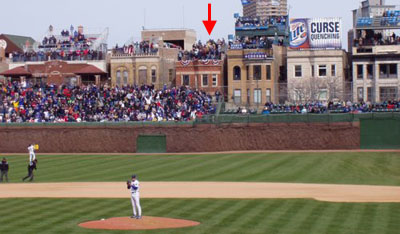
The rooftops all have high-def TV’s sprinkled around, but the broadcast delay makes it almost useless for anything but replays. I was grabbing a beer in an area where I could not see the park and I heard a cheer go up. I looked up at the screen and the camera was on the pitcher, scratching himself. To make matters worse the audio is off and they are playing the radio coverage of the game, which has no delay.
The view is great though. Not that much worse than some of the cheap seats in the upper deck. The only thing you can’t see is activity on the track near the ivy. But you use the cheers or sighs from the bleacher bums to determine what happened there. And of course it is just fun conceptually: I’m watching a live baseball game and I’m not in the park.
In the end I suppose the idea is a bit better than the experience. Of course, I didn’t pay for the ticket (which was at least $90) — and perhaps it would have been more fun with a roof full of friends — so I can’t complain really. It just wasn’t the raucous time that the park delivers. I think I’d rather be inside.
Why go tapeless?
No moving parts.
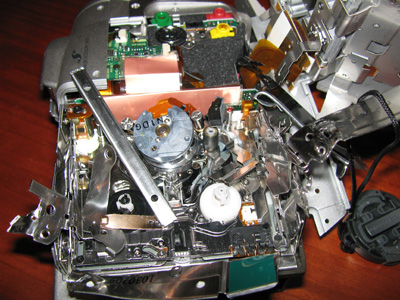
Imagine what the tape looked like when I finally got it out.
Update: You know this whole thing reminds me of the hell of getting my data out of Outlook a few years ago. People care about the data, not the app. Same goes for hardware. I didn’t think twice in destroying a videocam in my pursuit of a stuck videotape with Christmas 2006 on it.
See also: Canon Fodder.
Canon fodder

Convergence is not a flavor of tech hype I’m particularly susceptible to. Best device for the task, and all that. But both my trusty mini-DV cam and still camera went south at about the same time and so I naturally wondered if I could get away with a single camera. About a year before I was able to play around with a friend’s remarkable straight-to-memory videocam (which because of its small size enabled things like this). It was far too expensive to justify, however.
Enter the the Canon TX-1, by most accounts the first reasonably-priced ($500) high-definition tapeless camcorder that takes equally good stills. I’ve had it for a little over a week now and I’m totally impressed. There’s a comprehensive review over at DCRP, but here are a few quick thoughts.
Video image quality is stunning. It captures at 720p in 16:9. The downside is filesize, since the format is not MPEG but rather MJPEG (wrapped in an AVI container). MJPEG is literally a stream of single JPEG-compressed images. 15 minutes of video captured this way is a whopping 4GB. Even with the new 8GB SDHC cards on the market the TX-1 will stop recording at 4GB. (You can start a new clip immediately though.) The upside of MJPEG is that, since there is no inter-frame compression, you can actually pluck a still from the middle of the video and get a 7.1 megapixel shot. In fact you can take a still photo while shooting video. Nice touch — except that the camera records a frozen shot and shutter noise into the video itself. What’s up with that? Of course, you don’t have to capture in high-def. Video shot at VGA resolution looks quite good. You can capture a few hours at this rate, depending on tweaking.
The form factor is vertical, which takes some getting used to. Like you’re shooting a gun. People have complained about being unable to shoot with one hand. It can be done, it just takes time to learn. The really hard part is not the form but the size. The thing is just tiny, hardly bigger than a pack of cards. I constantly feel like I am going to drop the thing.
iPhoto works fine in snagging photos and videos from the camera … to a point. Any video larger than about 3/4 GB chokes. You must use the included Canon ImageBrowser software to remove files this size and larger, which is a bummer because the software itself is crappy. Hopefully iLife ’07 will address this issue.
So to recap. $500, tapeless, high-def video, 7.1 megapixel stills, tiny, great 10x optical zoom. Highly recommended.




